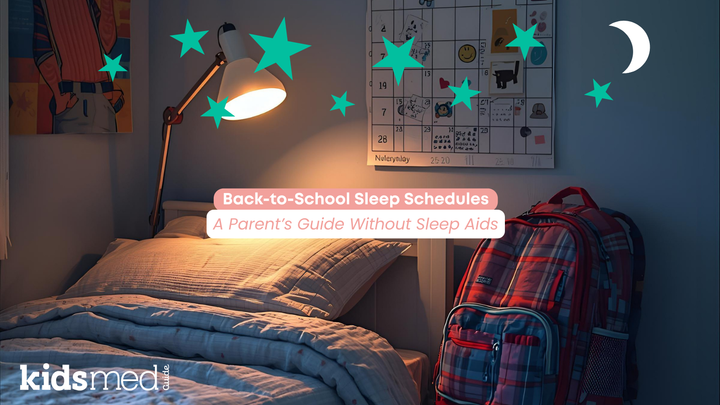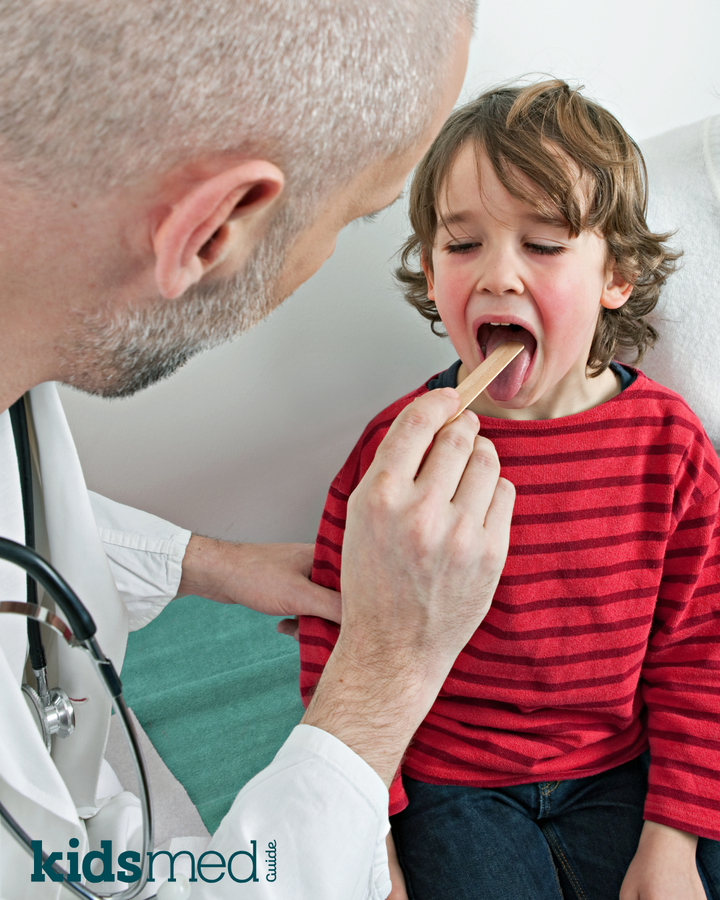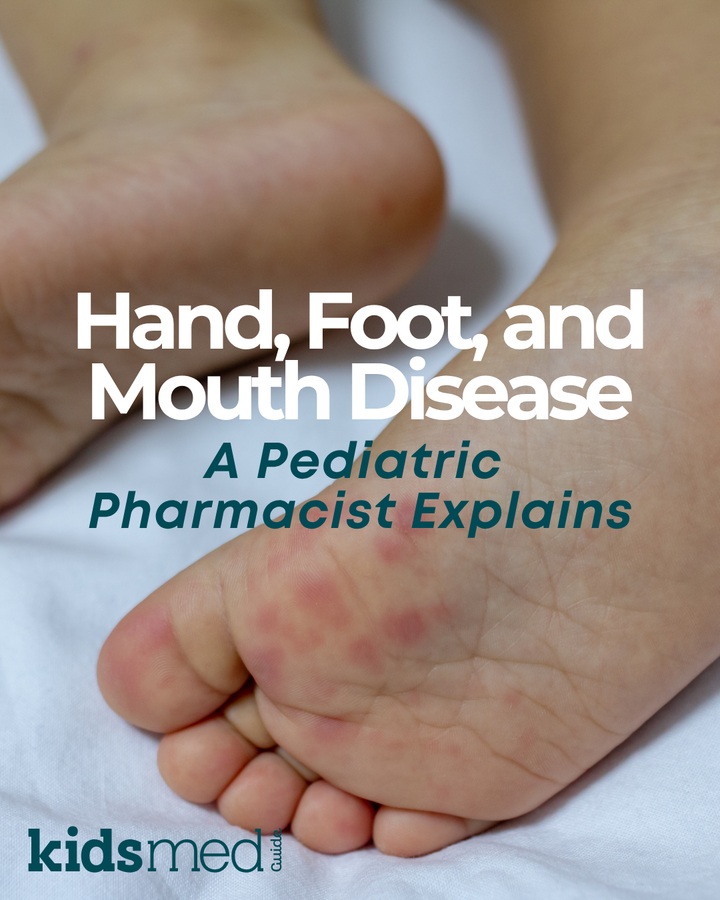Nosebleed Care and Medication Considerations
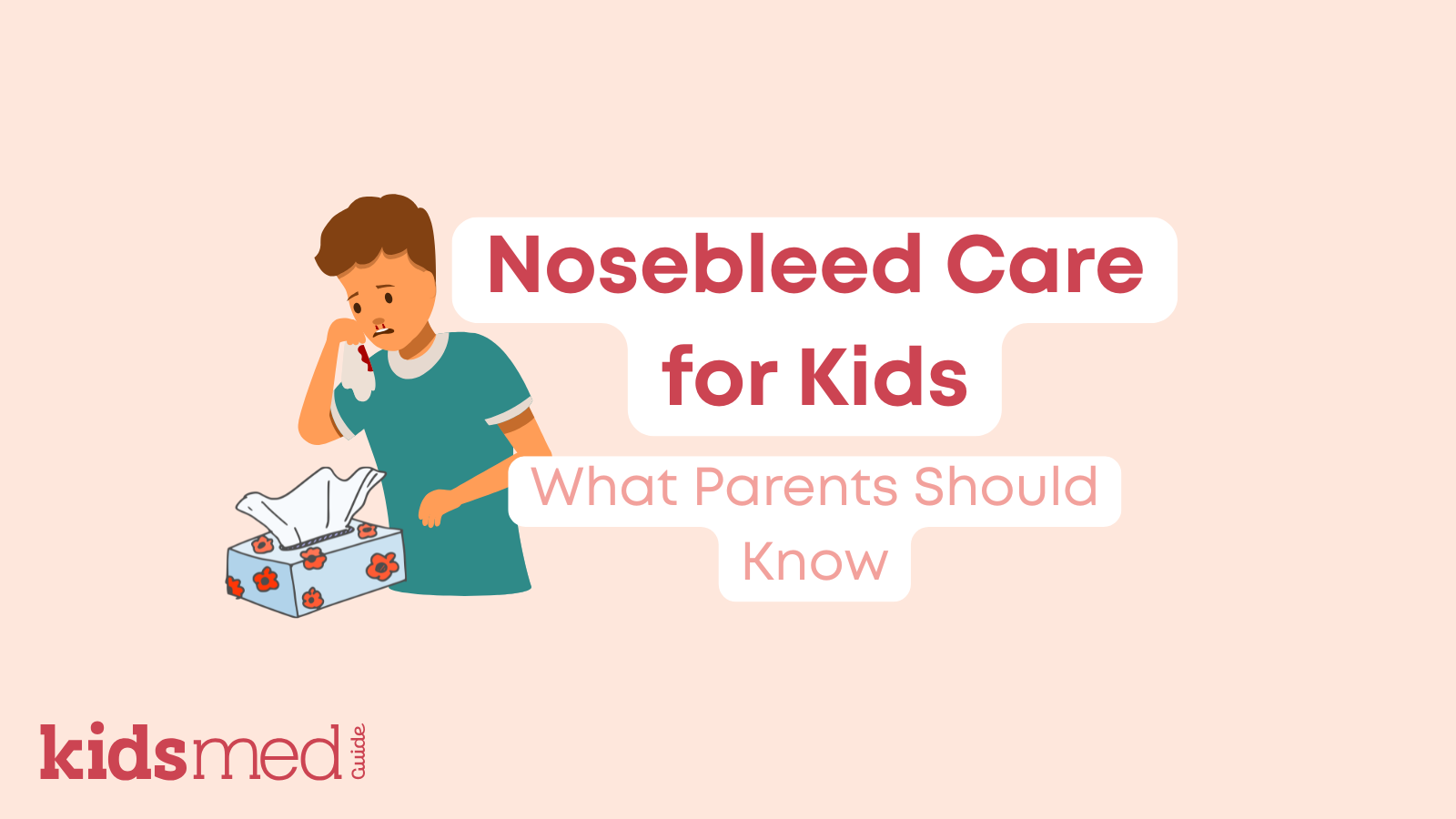
If your child suddenly has a red trickle down their face and you immediately panic, you’re not alone! Nosebleeds are very shocking, especially the first time they happen. They are very common in kids, and while they can be alarming to see, they are usually not serious.
This guide discusses the best treatments for nosebleeds, when medication may be recommended, and when it’s time to consult a pediatrician.
Understanding Nosebleeds in Children
Most nosebleeds originate from small blood vessels at the front of the nose, which are plentiful and can break easily. Common causes of nosebleeds in children include:
- Unknown and spontaneous – sometimes they just happen
- Dry air, especially indoors from heat or air conditioning- Minor bumps to the nose
- Nose picking (this is such a fun childhood phase)
- Allergies, itching, and frequent sneezing
- Colds and other viral respiratory infections
- Sinus infections
- Medications (antihistamines, decongestants, prescription blood thinners, and others)
- Less commonly, underlying conditions affecting blood clotting or blood vessel health
Occasional nosebleeds are normal, especially if there's a clear cause like a minor bump to the nose or a cold with lots of nasal congestion and tissue use.
If they occur frequently, last longer than 20 minutes, or are particularly heavy, that’s when extra attention is needed.
Immediate Nosebleed Treatment at Home
First aid steps for nosebleeds
Here’s what to do if your child has a nosebleed:
1. Sit them upright and lean slightly forward to prevent blood from flowing into the throat.
- Pinch the soft part of the nose (just below the bone) for 10 full minutes—set a timer so you don’t peek early!
3. Apply a cool compress or ice pack to the bridge of the nose to help blood vessels constrict.
4. Encourage calm breathing—crying or blowing the nose too soon can restart bleeding.
When to seek medical help
Contact your child’s pediatrician or get medical help if:
- Bleeding doesn’t stop after applying pressure for 20 minutes.
- Nosebleeds happen often (several times a week).
- Bleeding is severe, or your child looks pale, sweaty, or dizzy.
- Nosebleeds occur after a significant injury to the face or head.
- You notice other unexplained bleeding or bruising.
- You notice bleeding from both nostrils instead of just one.
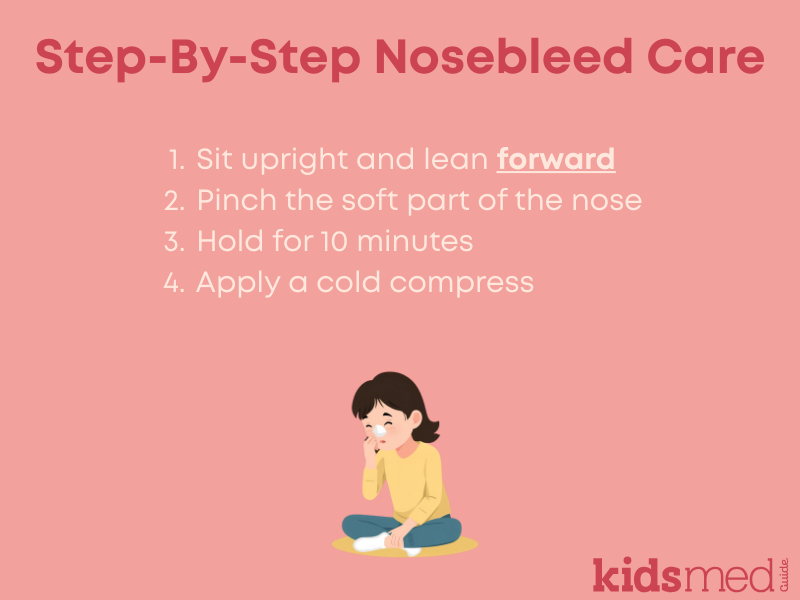
Medication Considerations for Nosebleeds
Over-the-counter options
Depending on the cause, safe treatments for children's nosebleeds can sometimes include products that keep the nasal passages moist and less likely to cause blood vessels to break.
- Saline sprays or drops: Gentle, safe for daily use, and can prevent drying.
- Nasal gels or ointments: A medication-free, gentle lubricant applied just inside the nostril with a clean cotton swab; these help prevent the lining from cracking.
- Humidifiers: Not a medication, but an important “tool” to add moisture to the air, especially in a dry bedroom.
Avoiding harmful medications
Some medicines can make nosebleeds worse:
- Blood thinners (such as aspirin) can raise the risk of bleeding. Children should never take aspirin unless a healthcare provider prescribes it for a specific medical condition.
- Certain nasal sprays, like decongestants, can dry out the nose if used for more than a few days. They can also cause rebound congestion and make symptoms worse. Many decongestant nasal sprays are not approved for young children. Always read the package label for age restrictions. We recommend not using decongestant nasal sprays unless advised to by your pediatrician.
Fact: While overusing decongestant nasal sprays can cause nosebleeds and rebound congestion, doctors might recommend a single dose of oxymetazoline nasal spray to help stop a persistent nosebleed.
Always consult your child’s healthcare provider before using any new medication, especially if your child has frequent nosebleeds. Certain prescription or over-the-counter medications could worsen nosebleeds.
For children who experience very persistent nosebleeds, healthcare providers may refer them to an ear, nose, and throat specialist or suggest a procedure to address the underlying cause.
Preventive Measures and Long-Term Care
To reduce how often nosebleeds happen:
- Use a humidifier in your child’s bedroom at night.
- Keep nails short to reduce scratching.
- Teach gentle nose blowing.
- Manage allergies with safe treatments (see our allergy management guide).
- Apply saline spray or a gentle lubricant gel regularly during dry months.
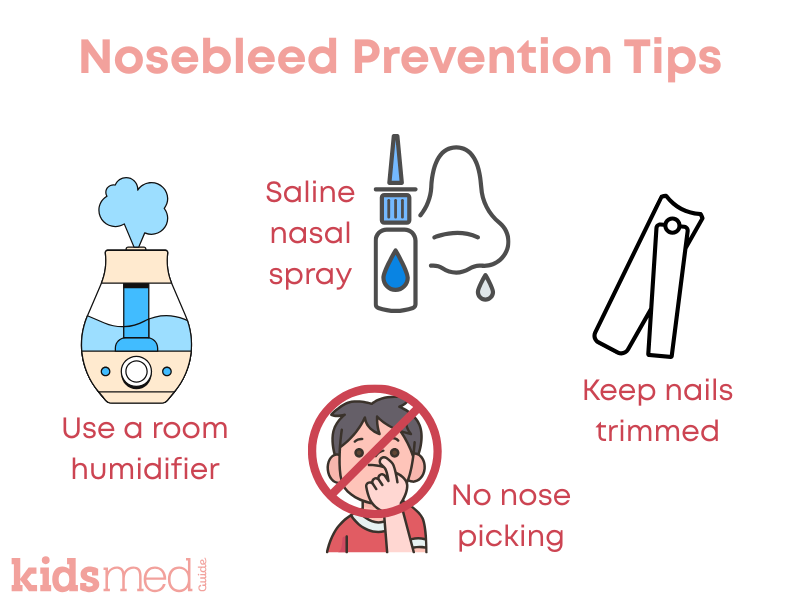
Educating Families on Nosebleed Management
- Show your child how to pinch their nose correctly.
- Remind them to lean slightly forward and tip their head forward, not to tilt their head back.
- Encourage reporting symptoms to you or a teacher right away.
If nosebleeds happen frequently in the classroom, work with your child’s teacher and school nurse to ensure tissues, gauze, or ice packs are available and that students can easily manage their nosebleeds.
Conclusion
Most nosebleeds in children are harmless and can be managed with gentle pressure, ice packs, and perhaps some OTC products like saline sprays and humidifiers. See a doctor if they are persistent, severe, occur after a significant injury, or are accompanied by other bleeding or bruising… or, if your gut tells you something’s up! But the occasional nosebleed is usually nothing to worry about.
FAQ Section
What is the best way to stop a child’s nosebleed at home?
Have your child sit up, lean forward, and pinch the soft part of their nose for 10 minutes without letting go.
Which over-the-counter products are safe for children with nosebleeds?
Saline sprays, drops, or nasal gels made with a gentle lubricant are safe and effective for most children.
What causes frequent nosebleeds in kids?
Dry air, allergies, nose picking, and frequent colds are common causes. Nosebleeds can also occur spontaneously. In rare cases, underlying health problems might be involved.
When should I contact a doctor for a child’s nosebleed?
If bleeding lasts more than 20 minutes, is very heavy, happens several times a week, or follows an injury. If your child is dizzy, sweaty, or has bleeding or bruising from other sources, seek medical care immediately.
How can nosebleeds in children be prevented long-term?
Humidifiers, saline sprays, managing allergies, and teaching children not to pick their noses can all help prevent nosebleeds.
The following references were used to compile this information:
Chronic Nosebleeds in Children: What To Do. (2025, January 23). HealthyChildren.Org. https://www.healthychildren.org/English/health-issues/conditions/ear-nose-throat/Pages/Chronic-Nosebleeds-What-To-Do.aspx?_gl=1*1a58j3z*_ga*NTYyMDAyMTQwLjE3NTg0Njg2NjY.*_ga_FD9D3XZVQQ*czE3NTg1OTQwMzMkbzIkZzEkdDE3NTg1OTQyNjckajQ0JGwwJGgw
Symptomviewer. (2017, June 24). HealthyChildren.Org. https://www.healthychildren.org/English/tips-tools/symptom-checker/Pages/symptomviewer.aspx?symptom=Nosebleed&_gl=1*10o9q3t*_ga*NTYyMDAyMTQwLjE3NTg0Njg2NjY.*_ga_FD9D3XZVQQ*czE3NTg1OTQwMzMkbzIkZzAkdDE3NTg1OTQwMzYkajU3JGwwJGgw
Womack, J. P., Kropa, J., & Stabile, M. J. (2018). Epistaxis: Outpatient Management. American Family Physician, 98(4), 240–245.

